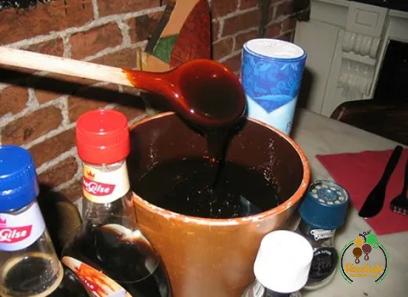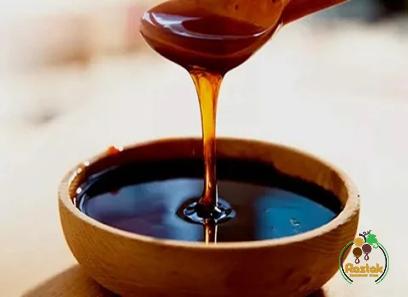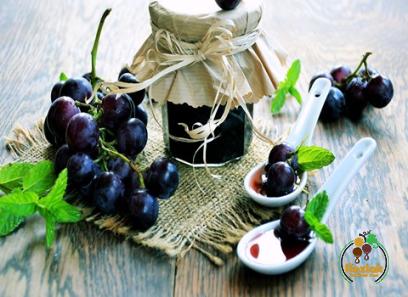It has strong tannins that mature with age. Cabernet Sauvignon is a grape that has a high alcohol content, usually in the 13-14% range. Due to the high volume of production, Cabernet is often readily available and cheap, which increases its popularity.
The Cabernet Sauvignon grape is a hybrid grape that originally consists of a combination of Cabernet Franc (red grape) and Sauvignon Blanc (white grape).
Cabernet Sauvignon wine comes in single varieties (made from 100 percent Cabernet Sauvignon grapes) and blends. Cabernet grapes have a strong presence in blends and are often combined with stronger complementary grapes.

What are the properties of Cabernet Sauvignon grapes?
Cabernet grapes have three distinct characteristics:
short and strong Despite its small size, Cabernet is very powerful: it grows well almost everywhere, regardless of the climate. Grapes can survive almost any climate, disease and even insect infestation, making them valuable to winemakers.
Perfect for barrel aging. Cabernet is unusual for its ability to blend well with oak, both in fermentation and barrel aging. This is partly what makes Cabernet so popular, oak barrels ripen the tannins and develop new flavors and aromas.
Thick and tan. Cabernet grapes have a thick, dark skin full of tannins. Cabernet also takes longer to reach the vine and is less difficult to pick.
What does Cabernet Sauvignon taste like?
Cabernet Sauvignon is known for its “green pepper” flavor, which comes from a compound called pyrazine. But Cabernet also has other distinct flavors. On the nose, the cabernet is very bright, penetrating very fruity and sweet notes.

What are the best regions for Cabernet Sauvignon?
Although Cabernet Sauvignon originated in Bordeaux, the Cabernet Sauvignon grape is a universal grape used throughout the world and not limited to France. Cabernet Sauvignon is a late ripening grape that prefers warm climates. Popular regions for Cabernet Sauvignon production include:
What are the best regions for Cabernet Sauvignon?
Although Cabernet Sauvignon originated in Bordeaux, the Cabernet Sauvignon grape is a universal grape used throughout the world and not limited to France. Cabernet Sauvignon is a late ripening grape that prefers warm climates. Popular regions for Cabernet Sauvignon production include:
What are the most famous Cabernet Sauvignon compounds?
The most popular Cabernet Sauvignon blend is the Bordeaux blend, which traditionally combines Cabernet grapes with Merlot grapes. In addition to Merlot, Cabernet is often blended with the following grape varieties:
Malbec
Betty Verdot
carmine
Shiraz
Tempranillo
Sangiovese
Cabernet Franc
What is the difference between Cabernet Sauvignon and Merlot?
Cabernet Sauvignon and Merlot are related in part because of the famous Bordeaux blend. Both pair well with other grapes, adding to the confusion. However, Cabernet and Merlot are two different grapes, each with their own strengths.

The main differences between Cabernet Sauvignon and Merlot are:
Merlot is fruity, while Cabernet’s strong tannins give it a bitter aftertaste.
Merlot sweetens dry wine, while Cabernet dries sweet wine.
Cabernet Sauvignon and Merlot age well in oak, although Merlot should be picked early to avoid over-ripening.
In Bordeaux, Cabernet Sauvignon and Merlot fight for control of the Bordeaux wine composition. In left coast regions such as St. Steph and Pessac-Leugnan, cabernets form the majority, while right bank merlots rule the mix.
The main reason is the soil division: Left Bank winemakers have successfully grown Cabernet on their sandy soils, while Right Bank Merlot growers benefit from the combination of clay and limestone.
What is the difference between Cabernet Sauvignon and Pinot Noir?
While Cabernet and Pinot Noir are both common red grape wines, these two grapes (and the wines made from them) couldn’t be more different:
Unlike the hardiness of Cabernet, Pinot Noir is a temperamental grape that requires more attention to cultivation and careful pruning. It grows only in certain seasons and at certain times.
Pinot Noir wines are lighter in color than Cabernet Sauvignon, have less tannin and, accordingly, have a shorter shelf life.
Cabernet is a heavy wine, both in flavor and texture, while Pinot is very light and delicate, especially for a red grape.

Cabernet Sauvignon dinner plates
Cabernet Sauvignon is very acidic and deeply tanned. The smaller the cabin, the more important the food should be. Cabernet gets better with age, so older cabinets with softer textures will do well. In general, foods with poor flavor or texture can dry out your mouth.
Common food pairings for Cabernet Sauvignon are:
Beef Wellington
Potato gnocchi with cream sauce
Cheddar, mozzarella or brie cheese
Dark Chocolate
Ability to adapt to agriculture and agricultural production
Cabernet-Sauvignon is a late budding, vigorous vine with large diameter vines in fertile conditions with very tall branches (long internodes) and woody tendrils.
It needs careful training and pruning, in the southern regions it can be long or short and it is relatively slow. Large wounds should be avoided. Removing wood, which is a difficult task, requires long and time-consuming work.
Cabernet-Sauvignon N often produces better results in heavy, well-drained soils than in acidic, well-drained soils. This variety occasionally suffers from black stem and this risk increases with some bases such as S04.
Susceptibility to diseases and pests
Cabernet-Sauvignon is less susceptible to gray rot. On the other hand, it is highly susceptible to wood diseases (atypiosis, ska) and powdery mildew.

Technical feasibility
Clusters of grapes and berries are small. Cabernet-Sauvignon produces wines with a very interesting tannic structure with a stable color when mature.
These grapes are generally suitable for aging and wood aging. When the wine reaches the proper maturity, this grape variety transforms from herbal aromas to more fun and complex flavors. On the other hand, when blended alone as a varietal, Cabernet Sauvignon often lacks body and roundness.
In France, Cabernet-Sauvignon N is officially included in the “Catalogue of Grape Varieties”. This variety is similarly listed in the catalog of other EU member states Germany, Austria, Bulgaria, Cyprus, Spain, Greece, Italy, Hungary and Malta.











Your comment submitted.